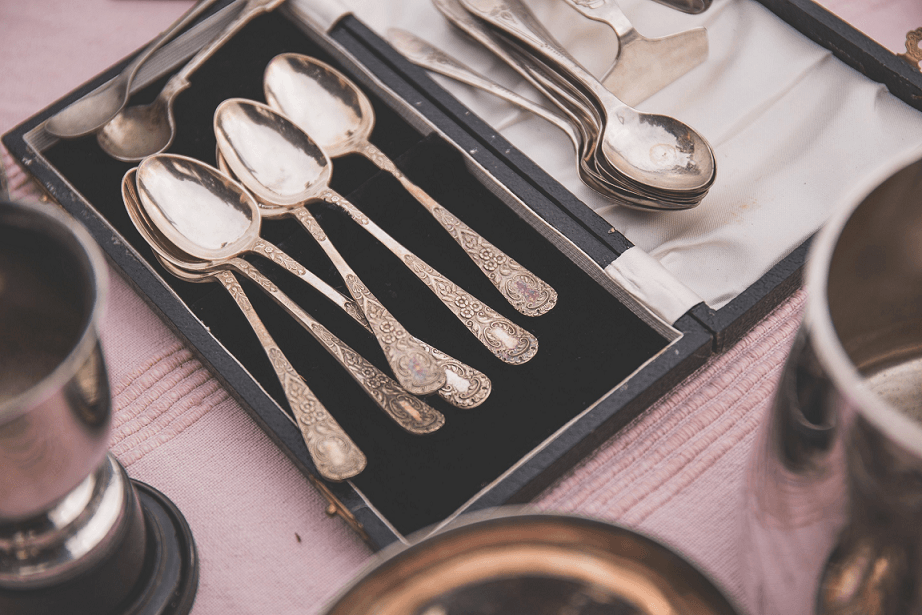Since ancient times, silver has been credited with cleansing and disinfecting abilities. This is largely why dishes for the nobility and for religious rituals were often made from this noble metal. We decided to check whether it has real disinfecting properties.
Stories and even instructions for using silver utensils for disinfecting purposes can be found not only in blogs And social networks, but also in Media. Websites dedicated to a healthy lifestyle advise use silver water as a preventive measure, as well as for the treatment of many diseases: colds, bronchitis, sinusitis, gastritis.
The most ancient silver products were discovered on the territory of Ancient Egypt and belonged to the pre-dynastic period (5000–3400 BC). Until the middle of the 2nd millennium BC. e. silver was valued even more than gold. Historian Herodotus noted, that in the 5th century BC. e. The leader of the Persians, Cyrus II, took drinking water in silver jugs with him on campaigns. Alchemists attributed silver to one of the three noble metals (together with gold and platinum) and looked for ways to obtain it from other substances. Nobility and royalty preferred use silver utensils; they were also popular in Christian rituals, largely due to the bactericidal properties attributed to them. In modern Europe, colloidal solutions of silver and its salts prescribed patients with various diseases: colds, trophic ulcers, epilepsy and gonorrhea.
Silver - a malleable, rather heavy (heavier than copper) metal of a silvery-white color, which has the highest electrical conductivity at room temperature. As a representative of noble metals, silver is insoluble in hydrochloric and dilute sulfuric acid, but easily dissolves in mercury. forming amalgam. Silver atom consists of from a positively charged nucleus, inside of which there are 47 protons and 61 neutrons, and electrons move around in five orbits. When an electron is removed, an atom becomes an electrically charged particle - an ion. Silver can be presented in the form of pure metal, various compounds (mainly salts) and a colloidal solution saturated with positively charged ions. It would be more accurate to say that colloidal silver eventually becomes a source of silver ions.
Modern medicine uses only a few drugs that contain silver salts. For example, "Protargol" - an antimicrobial and anti-inflammatory drug of local action, used mainly in ENT practice, "Collargol" - a solution with astringent, antiseptic and anti-inflammatory properties, "Argosulfan"- cream for the treatment of burns, trophic, purulent wounds, as well as bedsores. It is important to note that all of them refer to drugs for external use.

Colloidal silver represents are silver nanoparticles floating in water or other liquid. There are also true solutions of silver (for example, its nitrate), which are metal ions and an acidic residue. Moreover, both colloidal silver itself and its ions actually have antimicrobial effect - they penetrate the microbial cell and destroy it. By data WHO, the required concentration for a guaranteed antibacterial effect is 0.15 mg/l. In drinking water, according to SanPiN 1.2.3685-21 “Drinking water”, the maximum permissible amount of this metal amounts to only 0.05 mg/l, which is three times less than that required for disinfection.

It is important to note that when a person chronically exceeds the maximum permissible levels of silver intake develops argyrosis - the skin acquires a silver or gray-blue tint. Moreover, changes in skin color are irreversible; even laser therapy does not have a significant effect. One of the most famous patients with this condition was California resident Paul Karason. For many years he drank a colloidal silver solution prepared at home. In addition to argyrosis, excessive consumption of silver Maybe lead to kidney and gastrointestinal problems, seizures and headaches. In some countries it is even legal forbidden advertise colloidal silver as having a therapeutic effect, since it has no proven effectiveness, and silver ions are toxic superior heavy metals.

However, if you use silver utensils, there are no health consequences to worry about. Colloidal solution Can obtained only with the help of a special tool - an ionizer, which passes an electric current through water, promoting the detachment of electrons. A weak colloidal solution will be contain from 1 mg of silver per liter, more concentrated - up to 35. A spoon simply dropped into a glass of water will not saturate the water with a concentration that is dangerous to the body (above 0.05 mg/l), much less necessary for a bactericidal effect (0.15 mg/l).
Thus, simply dropping a silver spoon into a glass will not create the concentration necessary for antimicrobial action. However, provided that an electric current is passed through the water, it can actually disinfect a glass of water. True, drinking water purified in this way will be dangerous for humans for another reason.

Half-truth
Read on the topic:
- Silver Rush “Blue Man” Paul Karason dies in the USA
- Stephen Barrett "Colloidal Silver: Risk Without Benefit"
If you find a spelling or grammatical error, please let us know by highlighting the error text and clicking Ctrl+Enter.






